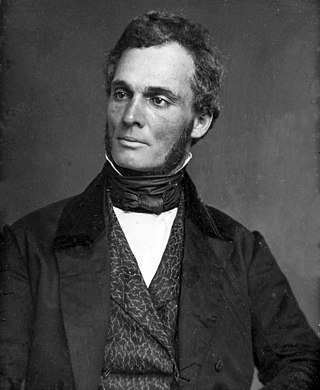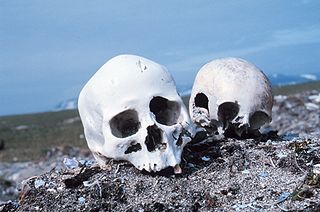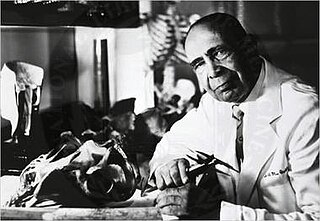Related Research Articles
Racism is the belief that groups of humans possess different behavioral traits corresponding to inherited attributes and can be divided based on the superiority of one race over another. It may also mean prejudice, discrimination, or antagonism directed against other people because they are of a different race or ethnicity. Modern variants of racism are often based in social perceptions of biological differences between peoples. These views can take the form of social actions, practices or beliefs, or political systems in which different races are ranked as inherently superior or inferior to each other, based on presumed shared inheritable traits, abilities, or qualities. There have been attempts to legitimize racist beliefs through scientific means, such as scientific racism, which have been overwhelmingly shown to be unfounded. In terms of political systems that support the expression of prejudice or aversion in discriminatory practices or laws, racist ideology may include associated social aspects such as nativism, xenophobia, otherness, segregation, hierarchical ranking, and supremacism.
Race is a categorization of humans based on shared physical or social qualities into groups generally viewed as distinct within a given society. The term came into common usage during the 16th century, when it was used to refer to groups of various kinds, including those characterized by close kinship relations. By the 17th century, the term began to refer to physical (phenotypical) traits, and then later to national affiliations. Modern science regards race as a social construct, an identity which is assigned based on rules made by society. While partly based on physical similarities within groups, race does not have an inherent physical or biological meaning. The concept of race is foundational to racism, the belief that humans can be divided based on the superiority of one race over another.
Australo-Melanesians is an outdated historical grouping of various people indigenous to Melanesia and Australia. Controversially, groups from Southeast Asia and South Asia were also sometimes included.

Robert Purvis was an American abolitionist in the United States. He was born in Charleston, South Carolina, and was likely educated at Amherst Academy, a secondary school in Amherst, Massachusetts. He spent most of his life in Philadelphia, Pennsylvania. In 1833 he helped found the American Anti-Slavery Society and the Library Company of Colored People. From 1845 to 1850 he served as president of the Pennsylvania Anti-Slavery Society and also traveled to Britain to gain support for the movement.

Forensic anthropology is the application of the anatomical science of anthropology and its various subfields, including forensic archaeology and forensic taphonomy, in a legal setting. A forensic anthropologist can assist in the identification of deceased individuals whose remains are decomposed, burned, mutilated or otherwise unrecognizable, as might happen in a plane crash. Forensic anthropologists are also instrumental in the investigation and documentation of genocide and mass graves. Along with forensic pathologists, forensic dentists, and homicide investigators, forensic anthropologists commonly testify in court as expert witnesses. Using physical markers present on a skeleton, a forensic anthropologist can potentially determine a person's age, sex, stature, and race. In addition to identifying physical characteristics of the individual, forensic anthropologists can use skeletal abnormalities to potentially determine cause of death, past trauma such as broken bones or medical procedures, as well as diseases such as bone cancer.
The concept of race as a categorization of anatomically modern humans has an extensive history in Europe and the Americas. The contemporary word race itself is modern; historically it was used in the sense of "nation, ethnic group" during the 16th to 19th centuries. Race acquired its modern meaning in the field of physical anthropology through scientific racism starting in the 19th century. With the rise of modern genetics, the concept of distinct human races in a biological sense has become obsolete. In 2019, the American Association of Biological Anthropologists stated: "The belief in 'races' as natural aspects of human biology, and the structures of inequality (racism) that emerge from such beliefs, are among the most damaging elements in the human experience both today and in the past."
Scientific racism, sometimes termed biological racism, is the pseudoscientific belief that empirical evidence exists to support or justify racism, racial inferiority, or racial superiority. Before the mid-20th century, scientific racism received credence throughout the scientific community, but it is no longer considered scientific. The division of humankind into biologically distinct groups, and the attribution of specific traits both physical and mental to them by constructing and applying corresponding explanatory models, that is, racial theories, is sometimes called racialism, race realism, or race science by its proponents. Modern scientific consensus rejects this view as being irreconcilable with modern genetic research.

Ward's Point is the southernmost point in the U.S. state of New York and lies within Tottenville, Staten Island, New York City. It is located at the mouth of Arthur Kill, across from Perth Amboy, New Jersey, at the head of Raritan Bay. The site is part of modern-day Conference House Park.
The term bioarchaeology has been attributed to British archaeologist Grahame Clark who, in 1972, defined it as the study of animal and human bones from archaeological sites. Redefined in 1977 by Jane Buikstra, bioarchaeology in the United States now refers to the scientific study of human remains from archaeological sites, a discipline known in other countries as osteoarchaeology, osteology or palaeo-osteology. Compared to bioarchaeology, osteoarchaeology is the scientific study that solely focus on the human skeleton. The human skeleton is used to tell us about health, lifestyle, diet, mortality and physique of the past. Furthermore, palaeo-osteology is simple the study of ancient bones.

African Burial Ground National Monument is a monument at Duane Street and African Burial Ground Way in the Civic Center section of Lower Manhattan, New York City. Its main building is the Ted Weiss Federal Building at 290 Broadway. The site contains the remains of more than 419 Africans buried during the late 17th and 18th centuries in a portion of what was the largest colonial-era cemetery for people of African descent, some free, most enslaved. Historians estimate there may have been as many as 10,000–20,000 burials in what was called the Negroes Burial Ground in the 18th century. The five to six acre site's excavation and study was called "the most important historic urban archaeological project in the United States." The Burial Ground site is New York's earliest known African-American cemetery; studies show an estimated 15,000 African American people were buried here.

Rick Antonius Kittles is an American biologist specializing in human genetics and a Senior Vice President for Research at the Morehouse School of Medicine. He is of African-American ancestry, and achieved renown in the 1990s for his pioneering work in tracing the ancestry of African Americans via DNA testing.
Mongoloid is an obsolete racial grouping of various peoples indigenous to large parts of Asia, the Americas, and some regions in Europe and Oceania. The term is derived from a now-disproven theory of biological race. In the past, other terms such as "Mongolian race", "yellow", "Asiatic" and "Oriental" have been used as synonyms.

William Montague Cobb (1904–1990) was an American board-certified physician and a physical anthropologist. As the first African-American Ph.D in anthropology, and the only one until after the Korean War, his main focus in the anthropological discipline was studying the idea of race and its negative impact on communities of color. He was also the first African-American President of the National Association for the Advancement of Colored People. His career both as a physician and a professor at Howard University was dedicated to the advancement of African-American researchers and he was heavily involved in civil rights activism. Cobb wrote prolifically and contributed both popular and scholarly articles during the course of his career. His work has been noted as a significant contribution to the development of the sub-discipline of biocultural anthropology during the first half of the 20th century. Cobb was also an accomplished educator and taught over 5000 students in the social and health sciences during his lifetime.

Alan H. Goodman is a biological anthropologist and author. He served as president of the American Anthropological Association from 2005 to 2007. With Yolanda Moses, he co-directs the American Anthropological Association's Public Education Project on Race. His teaching, research and writing focuses on understanding how poverty, inequality and racism “get under the skin.” He received his PhD from the University of Massachusetts Amherst. Goodman was a pre-doctoral research fellow in stress physiology at the Karolinska Institute, Stockholm and a postdoctoral fellow in international nutrition at the University of Connecticut and the Salvador Zubirán National Institute of Health Sciences and Nutrition, Mexico.
Negroid is an obsolete racial grouping of various people indigenous to Africa south of the area which stretched from the southern Sahara desert in the west to the African Great Lakes in the southeast, but also to isolated parts of South and Southeast Asia (Negritos). The term is derived from now-discredited conceptions of race as a biological category.
George J. Armelagos was an American anthropologist, and Goodrich C. White Professor of Anthropology at Emory University in Atlanta, Georgia. Armelagos significantly impacted the field of physical anthropology and biological anthropology. His work has provided invaluable contributions to the theoretical and methodological understanding human disease, diet and human variation within an evolutionary context. Relevant topics include epidemiology, paleopathology, paleodemography, bioarchaeology, evolutionary medicine, and the social interpretations of race, among others.
Barbara J. Heath is a professor in the Department of Anthropology at The University of Tennessee, Knoxville who specializes in historical archaeology of eastern North America and the Caribbean. Her research and teaching focus on the archaeology of the African diaspora, colonialism, historic landscapes, material culture, public archaeology and interpretation, and Thomas Jefferson.
Leith Patricia Mullings was a Jamaican-born author, anthropologist and professor. She was president of the American Anthropological Association from 2011–2013, and was a Distinguished Professor of Anthropology at the Graduate Center of the City University of New York. Mullings was involved in organizing for progressive social justice, racial equality and economic justice as one of the founding members of the Black Radical Congress and in her role as President of the AAA. Under her leadership, the American Anthropological Association took up the issue of academic labor rights.

Caroline Stewart Bond Day was an American physical anthropologist, author, and educator. She was one of the first African-Americans to receive a degree in anthropology.
William Shedrick Willis Jr. was born July 11, 1921 in Waco, Texas. He was an ethnohistorian, and an early pioneer in African American anthropology. He is best known for his publication of "Skeletons in the Anthropological Closet". He was the first Black scholar to the faculty of Southern Methodist University. While at SMU he was instrumental in the establishing of the African American Studies Program.
References
- 1 2 3 "Michael L. Blakey". African American Trailblazers in Virginia History. The Library of Virginia. 2012. Retrieved August 7, 2012.
- ↑ "Michael Blakey: National Endowment for the Humanities Professor". William and Mary: Anthropology. College of William and Mary . Retrieved August 7, 2012.
- ↑ Quigley, Christine (2001). Skulls and Skeletons: Human Bone Collections and Accumulations. McFarland. p. 117. ISBN 9780786410682 . Retrieved August 7, 2012.
- 1 2 "Alumni Profiles: UMass Amherst Graduate School to Honor Anthro Alum at 100th Anniversary Gala". College of Social and Behavioral Sciences. University of Massachusetts Amherst. March 3, 2008. Archived from the original on June 15, 2010. Retrieved August 7, 2012.
- 1 2 Ferraro, Gary (2007-03-02). Cultural Anthropology: An Applied Perspective. Cengage. p. 5. ISBN 9780495100089 . Retrieved August 7, 2012.
- ↑ Byrd, W. Michael (2000). An American Health Dilemma: A Medical History of African Americans and the Problem of Race: Beginnings to 1900. Psychology. p. 20. ISBN 9780415924498 . Retrieved August 7, 2012.
- 1 2 Johnson, Matthew (2010-01-26). Archaeological Theory: An Introduction. John Wiley & Sons. p. 206. ISBN 9781405100144 . Retrieved August 7, 2012.
- ↑ Kirkwood, Scott (Summer 2006). "History Unearthed: An African burial ground unearthed in New York City becomes the latest addition to the National Park System". National Parks. Washington, DC: National Parks Conservation Association. pp. 12–13. Retrieved August 8, 2012.
- ↑ Beresford, Jane (April 26, 2004). "The African foundations of New York". BBC News . London . Retrieved August 8, 2012.
- 1 2 3 Luo, Michael (October 2, 2003). "In Manhattan, Another Burial For 400 Colonial-Era Blacks". The New York Times . Retrieved August 8, 2012.
- 1 2 Gregory, Steven; Roger Sanjek (1994). Race. New Brunswick, New Jersey: Rutgers University Press. pp. 33–34. ISBN 9780813521091.
- ↑ Green, Kristen (February 3, 2012). "Blakey: 'Racism' key to any discussion of race". Richmond Times-Dispatch . Richmond, Virginia. Archived from the original on February 4, 2013. Retrieved August 7, 2012.